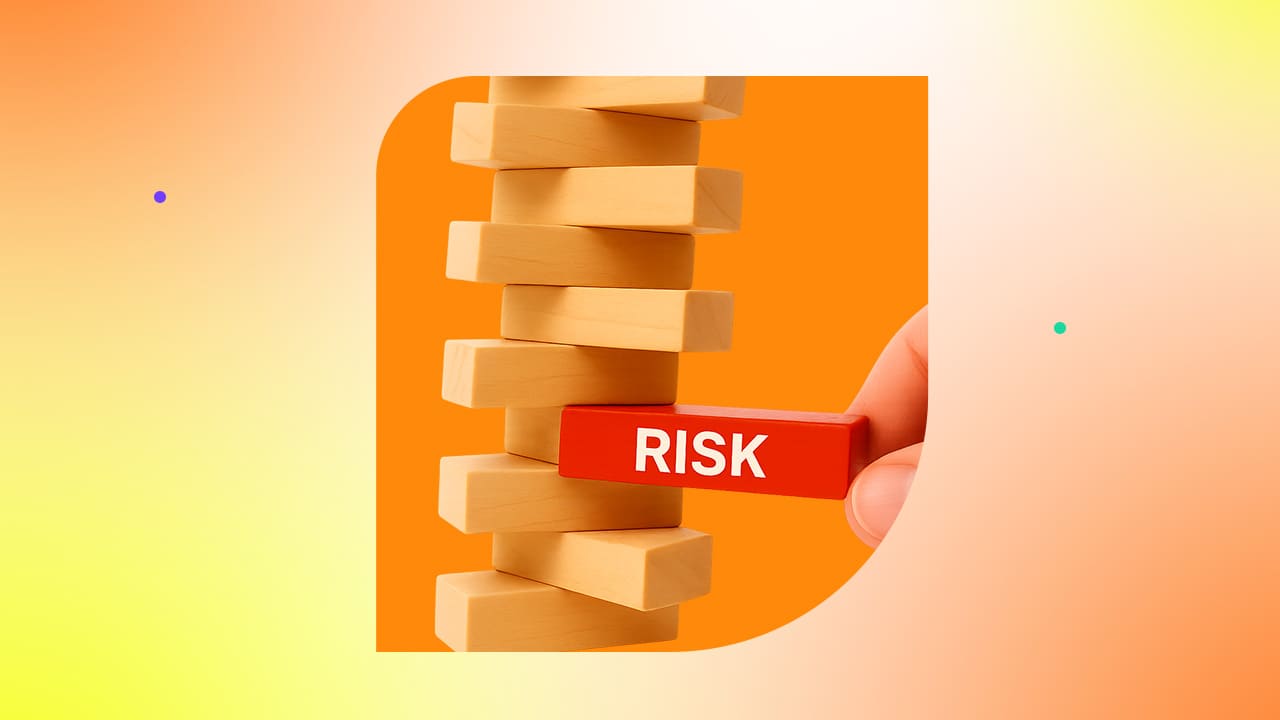Risk-Based Testing: Prioritizing Test Efforts Based on Potential Impact

In the rapidly growing software development arena, testing everything significantly is not accurate. Projects often face restricted resources, strict deadlines, and growing intricacy, with pressure to release superior-quality software faster than ever. This makes it essential for QA teams to function intelligently, not just harder. This is where RBT (Risk-Based Testing) comes in.
Despite testing each section of a system with a similar level of effort, risk-based testing encourages teams to prioritize their test actions according to the risk factor. It helps detect which portions of the app are expected to fail and which failures would have extremely serious penalties.
What is Risk-Based testing?
It is a strategic approach in QA and software testing where efforts are prioritized based on the risk level associated with potential failures. Instead of testing every single feature in depth, a risk-based testing approach focuses the team’s resources and time on areas that pose a threat to business value, customer satisfaction, or product quality if they fail.
In this situation, risk is usually explained as
Risk = Impact of Failure × Probability of Failure
- Impact means the severity of the penalties if an error occurs.
- Probability means how likely it is that an error will occur in a specific element or feature.
Risk-based software testing guarantees that:
- Features with great business value & complexity receive more comprehensive testing.
- Low-risk areas are perfectly tested with equal effort.
- Stakeholders have insight into risk levels and how they’re being addressed through testing.
Ultimately, risk-based testing in QA enables teams to focus on what matters most, minimizing the likelihood of expensive failures slipping through to production while optimizing test effectiveness.
Why Risk-Based Testing Matters
This form of testing matters as it helps QA teams prioritize their test efforts where they will have the biggest impact. In outdated testing, all traits might receive equal consideration, irrespective of their possibility to fail. So, what does risk-based testing prioritize in the QA process? It focuses on:
- High-risk app section, which is expected to incur penalties if it fails.
- The crucial functionalities of any business, where failure could cause user dissatisfaction or financial loss.
- Frequently changing or complicated elements are more prone to errors.
- Compliance-sensitive traits, particularly in regulated verticals such as finance or healthcare.
What is Risk-Based testing in agile?
Risk-based QA testing in Agile is an approach that detects, evaluates, and prioritizes test actions based on their potential business, user, or technical impact, all within the fast, iterative cycles of Agile development.
Agile teams function in short and rapid sprints with restricted time, so it is practical (or not possible) to test everything. This is where risk-based testing fits seamlessly; it helps focus efforts on the high-risk modules, customer stories, or features, guaranteeing that test time is spent where it adds high value.
Pros and Cons of Risk-Based Testing
Pros
- Robust Business Alignment
- Quick Time to Market
- Effective Usage of Resources
- Enhanced Test Prioritization
- Supports Agile & CD
- Improved Communication Across Teams
Cons
- Likelihood of Missed Errors in Low-Risk Areas
- Early Setup Can Be Time-Consuming
- Subjectivity in Risk Assessment
- Necessitates Skilled Testers and Domain Knowledge
- Not a Substitute for Comprehensive Testing
Techniques & Tools to Support Risk-Based Testing
Implementing risk-based testing effectively requires an accurate blend of techniques and tools to detect, assess, and maintain risk competently throughout the testing lifecycle. From smart automation to risk scoring, these tools support experts to stay focused on what is significant.
Techniques
- Risk Matrices or Heat Maps: Visual tools that plot likelihood vs. effect for guiding test prioritization.
- Risk Scoring Models: Hand over the numerical significance to features or necessities based on the possibility of failure and the business impact.
- Risk Evaluation Sessions: Joint meetings with stakeholders to find & prioritize risks.
- Necessities Traceability: Mapping testing directly to higher-risk demands to ensure focused coverage.
- Exploratory Testing in High-Risk Parts: Robust, unscripted testing to expose hidden problems.
ACCELQ: A Modern Platform for Intelligent Risk-Based Testing
When it comes to allowing risk-based testing with speed and accuracy, ACCELQ, the most reliable No-Code Automation Platform stands out as a robust solution designed for DevOps and Agile situations.
Why ACCELQ for Risk-Based Testing?
1. AI-centric Automation Testing
ACCELQ employs artificial intelligence (AI) to detect gaps in test coverage and propose high-priority test parts on the basis of change impact, perfectly aligning with RBT ideologies.
2. Change Impact Scrutiny
Instantaneously assesses which sections of the app are affected by current changes, supporting QA teams to evaluate and react to rising risk areas.
3. Requirements-centric Testing
Tests in this pristine platform are connected directly to user needs and stories, making it simpler to track and order tests based on business threats.
4. E2E Traceability
Complete traceability from risk matters to test cases and outcomes confirms complete visibility into how perfectly risks are being tested and addressed.
5. Smooth Integration with CI/CD
Supports continuous testing with integrations into your DevOps toolchain, supporting QA teams to evaluate and mitigate risks in real time.
6. N0-Code, Rapid Automation
Allows business users and human testers to contribute to risk-based automated testing without demanding deep coding expertise.
While multiple test automation tools support risk-based testing, such as Jira (custom risk fields), PractiTest (traceability), and TestRail (risk-based test planning), ACCELQ brings them all together in a combined, AI-based platform built for rapid-paced delivery cycles.
Benefits of Risk-Based testing
1. Optimized Test Coverage
Concentrates testing on the crucial and most vulnerable sections of the system, guaranteeing better test coverage where it truly counts.
2. Improved Resource Allocation
Decreases wasted effort on low-risk sections, enabling QA teams to do more with less, particularly valuable when resources and time are restricted.
3. Rapid Error Detection in High-Impact Areas
Increases the possibilities of detecting severe defects earlier in the SDLC, when fixes are inexpensive and easier.
4. Supports Continuous Delivery and Agile
Fits flawlessly into iterative development procedures, enabling risk reassessment each sprint and aligning testing with rising priorities.
5. Improved Stakeholder Confidence
When stakeholders notice that the riskiest traits are being comprehensively tested, it builds faith and belief in the testing procedure and the product.
6. Time and Cost Effectiveness
Minimizes the expense of post-release defects by catching crucial errors earlier and expedites time-to-market by prioritizing what mainly matters.
Conclusion
In a world of growing complexity and fast releases, risk-based testing isn’t just a practice; it’s a need. It empowers teams to make informed decisions about what to test, where to test, and how effectively to test, based on the level of risk each element poses.
By giving extra attention to high-risk areas, QAs can ensure greater QA with limited resources while reducing the likelihood of failures impacting production. Whether you are working in outdated development models, DevOps, or Agile, risk-based testing gives a framework for more intelligent QA.
Jump small: detect highly prone areas in your next launch cycle or sprint. Implement tools such as ACCELQ to track risk coverage and automate smartly. Over time, you will develop a tradition of risk awareness and test effectiveness that scales with your product, shielding your users.
Yuvarani Elankumaran
Technical Consultant at ACCELQ
Yuvarani Elankumaran is a highly skilled technical consultant at ACCELQ. With over a decade of experience in the field of Test Automation, Yuvarani is a seasoned professional who is well-versed in a variety of programming languages and automation frameworks.
You Might Also Like:
 What Is a Data Pipeline? Considerations & Examples
What Is a Data Pipeline? Considerations & Examples
What Is a Data Pipeline? Considerations & Examples
 Cheatsheets every Tester Should Know.
Cheatsheets every Tester Should Know.
Cheatsheets every Tester Should Know.
 Accessibility Testing: What Every QA Team Should Learn?
Accessibility Testing: What Every QA Team Should Learn?
































